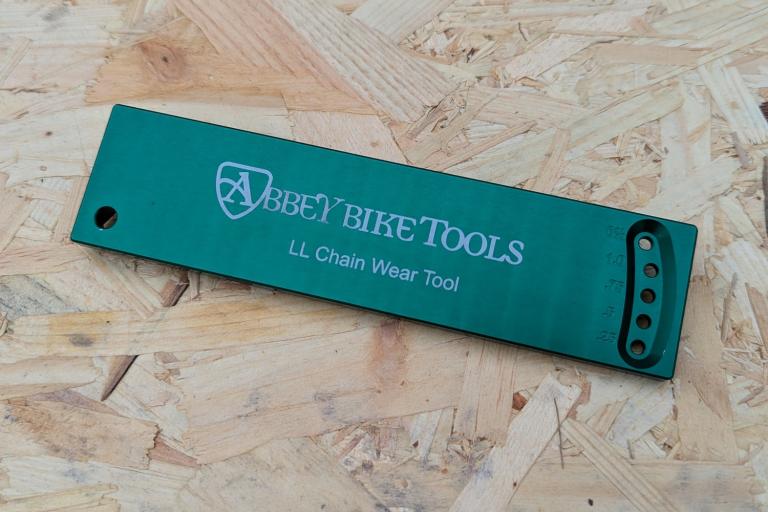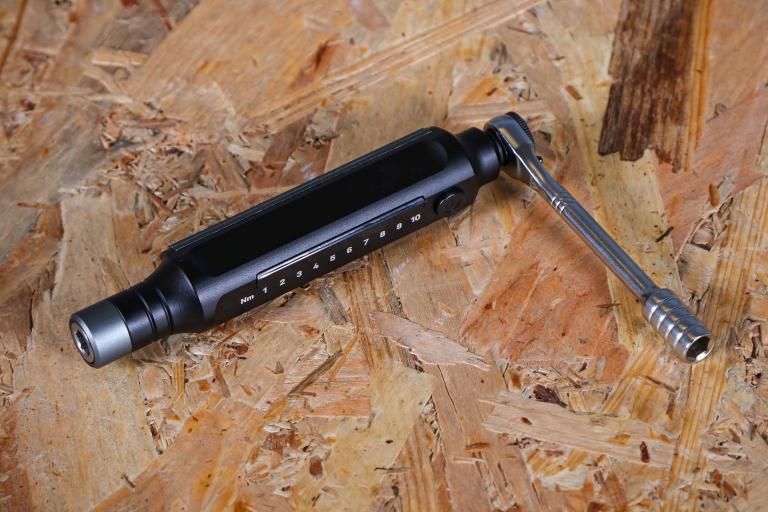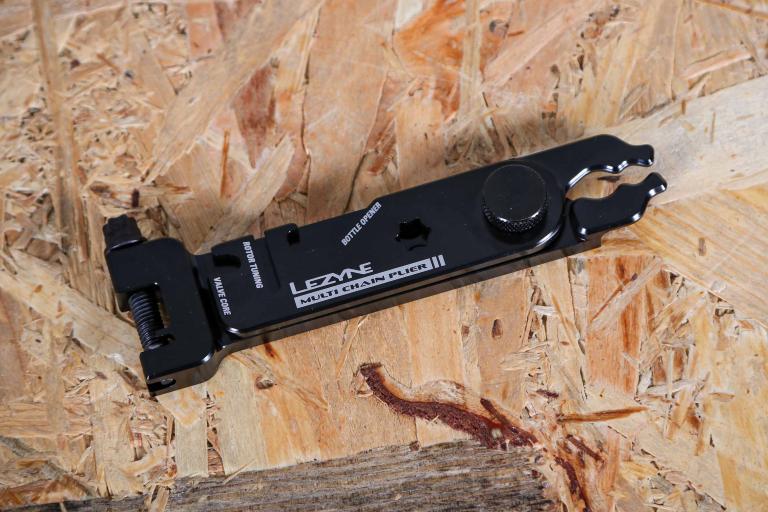- News
- Reviews
- Bikes
- Components
- Bar tape & grips
- Bottom brackets
- Brake & gear cables
- Brake & STI levers
- Brake pads & spares
- Brakes
- Cassettes & freewheels
- Chains
- Chainsets & chainrings
- Derailleurs - front
- Derailleurs - rear
- Forks
- Gear levers & shifters
- Groupsets
- Handlebars & extensions
- Headsets
- Hubs
- Inner tubes
- Pedals
- Quick releases & skewers
- Saddles
- Seatposts
- Stems
- Wheels
- Tyres
- Tubeless valves
- Accessories
- Accessories - misc
- Computer mounts
- Bags
- Bar ends
- Bike bags & cases
- Bottle cages
- Bottles
- Cameras
- Car racks
- Child seats
- Computers
- Glasses
- GPS units
- Helmets
- Lights - front
- Lights - rear
- Lights - sets
- Locks
- Mirrors
- Mudguards
- Racks
- Pumps & CO2 inflators
- Puncture kits
- Reflectives
- Smart watches
- Stands and racks
- Trailers
- Clothing
- Health, fitness and nutrition
- Tools and workshop
- Miscellaneous
- Buyers Guides
- Features
- Forum
- Recommends
- Podcast
review
 2022 Birzman Clam 3pc Set 1.jpg
2022 Birzman Clam 3pc Set 1.jpg£7.99
VERDICT:
A cost-effective way to get your callipers aligned quickly
Cheap
Three in a pack
Can disappear into calliper
Weight:
13g
Contact:
At road.cc every product is thoroughly tested for as long as it takes to get a proper insight into how well it works. Our reviewers are experienced cyclists that we trust to be objective. While we strive to ensure that opinions expressed are backed up by facts, reviews are by their nature an informed opinion, not a definitive verdict. We don't intentionally try to break anything (except locks) but we do try to look for weak points in any design. The overall score is not just an average of the other scores: it reflects both a product's function and value – with value determined by how a product compares with items of similar spec, quality, and price.
What the road.cc scores meanGood scores are more common than bad, because fortunately good products are more common than bad.
- Exceptional
- Excellent
- Very Good
- Good
- Quite good
- Average
- Not so good
- Poor
- Bad
- Appalling
The Birzman Clam 3pc Set is a simple and cheap way to get your brake callipers centred over your rotors quickly. They are not without issue, though, so be aware before purchasing.
The major bugbear about disc brakes is rotor rub, and if you haven't got your callipers perfectly aligned over a trued rotor, you are forever going to be suffering the inevitable squeak, squeak, squeak as an even slightly warped rotor rubs past your pads. Even worse, you will be rapidly accelerating asymmetrical wear of the pad, as it contacts the rotor off centre.
The only way to ensure that your callipers are 100 per cent aligned with your rotor is to use a rotor alignment spacer like the Birzman Clam.
For many years I have used a rather high-end esoteric tool from Hayes called the Feel'R gauge. This is essentially two thin sheets of stainless steel that you align either side of the disc rotor, then carefully rotate in between the pads of a loosened calliper.
This does take occasional faff to ensure that the stainless steel petals are lying completely flush with the rotor surface and will fit in the millimetre gap between the pad and rotor. Once in place you can then squeeze the brake lever, pressing the pads into the stainless steel petals, and then tighten the calliper ensuring that it is perfectly aligned over the rotor. You then rotate the wheel backwards to remove the tool from between pad and rotor.
The Feel'R Gauge has a body attached to it which is also used for spreading out pads if the brake lever is accidentally actuated with the wheel removed.
The Birzman Clam does not have any sort of handle attached with it, and that's really my only issue with this particular tool.
Essentially a piece of stainless steel folded over the rotor, the Birzman Clam disappears entirely into even standard sized pads let alone dual-piston pads, and you can't actually see it once it's fully in place.
Most of the time this wasn't an issue, but on occasion it would get fouled and would require some digging and poking with gloved fingers in order to get it out from between rotor and piston.
Once it was in place, the act of centring the calliper was exactly the same as with the Hayes gauge or the Lifeline one Liam reviewed last year.
The Hayes gauge retails for about $24 US, and is not currently available in the UK except via importers like Amazon or ebay at often ridiculously inflated prices (for the delivery, anyway). So the Birzman offering is much, much cheaper. And you get three of them to boot – not that I can think of a situation where you would want more than one in a workshop setting, and you are highly unlikely to be doing brake calliper alignment out in the garage or out the back of your car. But if you do need more than one, it's always handy to know that there are two spare on hand.
> Six essential tools for cyclists who do their own bike maintenance
Liam felt so-so about Lifeline's £10 Pro Disc Brake Caliper Alignment Tool, but I think if you're looking for a cost-effective alignment spacer that includes a pad spreader, the Lifeline one looks a jolly good shout.
There are many, many imitations of the Clam design available for a few quid, and I can't see why any single slice of bent metal would be any better than the next, but getting three for under £8 is still money well spent. And you'll never be short of one if needed.
Verdict
A cost-effective way to get your callipers aligned quickly
road.cc test report
Make and model: Birzman Clam 3pc Set
Size tested: 58mm
Tell us what the product is for and who it's aimed at. What do the manufacturers say about it? How does that compare to your own feelings about it?
For people who want to get their callipers aligned over their disc rotors, and not spend much money doing so.
Birzman says:
Creates an equal space between disc brake pads and rotor for calliper adjustments.
Tell us some more about the technical aspects of the product?
From Birzman:
Instructions of Use:
i. Slightly loosen the bolts connecting the calliper to the fork.
ii. Place the Clam on the rotor and slide it between the disc brake pads.
iii. Apply the brakes and, with the Clam in place, tighten the bolts.
iv. Release the brakes, turn the rotor and allow the Clam to slide out.
Material
Stainless steel
Size
58mm
Rate the product for quality of construction:
9/10
Rate the product for performance:
7/10
Occasionally a bit of a faff, if it disappears inside the calliper.
Rate the product for durability:
8/10
Rate the product for weight (if applicable)
10/10
Rate the product for value:
5/10
Tell us how the product performed overall when used for its designed purpose
I was happy with the performance, but if I have the Hayes or Lifeline tool to hand I would prefer to use that, as it's easier to get inserted and then removed afterwards.
Tell us what you particularly liked about the product
The price.
Tell us what you particularly disliked about the product
The lack of a handle.
Did you enjoy using the product? Yes
Would you consider buying the product? Yes
Would you recommend the product to a friend? Yes, but with caveats.
Use this box to explain your overall score
The Birzman Clam doesn't have a handle, so occasionally it can be tricky to retrieve from between rotor and pad, but apart from that it's a good product.
About the tester
Age: 47
I usually ride: Sonder Camino Gravelaxe My best bike is: Nah bro that's it
I've been riding for: Over 20 years I ride: A few times a week I would class myself as: Expert
I regularly do the following types of riding: cyclo cross, general fitness riding, mtb, G-R-A-V-E-L
Living in the Highlands, Mike is constantly finding innovative and usually cold/wet ways to accelerate the degradation of cycling kit. At his happiest in a warm workshop holding an anodised tool of high repute, Mike's been taking bikes apart and (mostly) putting them back together for forty years. With a day job in global IT (he's not completely sure what that means either) and having run a boutique cycle service business on the side for a decade, bikes are his escape into the practical and life-changing for his customers.
Latest Comments
- andystow 21 min 33 sec ago
Local to me: 3 injured after multi-vehicle crash in Downtown Peoria....
- Destroyer666 5 hours 4 min ago
Anodizing the aluminium is also for corrosion resistance and therefore enhances the longevity of the rims while this is not really a case for...
- bobbinogs 6 hours 18 min ago
Wheelsmith has always been very good for me. Malcolm was always very opinionated so I got bored with him telling me I should be riding tubeless,...
- Terry Hutt 6 hours 37 min ago
I assume you can carry an e-bike battery on the tube if you leave the bike at home. ...
- chrisonabike 7 hours 39 min ago
I love it - it's a roundabout with a sculpture of a roundabout on its desk!
- cmedred 7 hours 40 min ago
From the position of the cyclist when the video starts and the position of the bike later, it looks highly unlikely that the cyclist went "into the...
- Rendel Harris 7 hours 47 min ago
To rhyme with design. I wondered this myself so looked it up a while ago, according to the founder Micki Kozuschek he and his team had a few...
- Rendel Harris 8 hours 40 min ago
It's not being pedantic at all, careless driving is successfully prosecuted (and I have been in court more than once when a driver has been...
- HLaB 9 hours 3 min ago
It's hopefully an urban myth but I heard it was designed that way on purpose, so the cyclepath captured any flooding and the busway would remain clear
- mdavidford 9 hours 6 min ago
I should imagine eating chopsticks anywhere could be potentially rather perilous.




Add new comment
5 comments
I improvised a set of these: I took the stiff plastic cover off a notebook and cut it to shape.
I have had a set of these for a few years and they really do help in my limited experience. I'm no disc brake expert so maybe I have been doing this wrong but I find that with new pads fitted, with a fairly new disc, there will always be rub - there just isn't room in there. Using a clam greatly minimises the rub and it dissappears after a few kms of riding (presumably havibng taken the tops off the pads. With slighlty more worn dics then using these stops the rub in the first place.
Mine also came in a set of 3 but they are different widths - I assume for different sizes of rotors. I have only ever used the small one as nothing bigger will fit between the pads. Annoyingly they aren't labelled by size so maybe the reviewer also had different sizes but didn't know. I measured mine and labelled them with a texta.
They are all the same thickness - 0.3mm either side.
Why is this any better than doing the same action with a loosened caliper directly onto the brake disc? As long as the pistons aren't sticky they will retract to the same spacing anyway.
It's what I've done with all my hydraulic discs for the last 20+ years. Not that Road direct mount needs the same level of adjustment as Post or IS.
They just help with adding a mm gap, so handy if you do have slightly sticky pistons or are bleeding the system.
If you look on fleaBay, there's lots of similar items for a couple of quid (they all seem to come in threes for some reason when you only need one).